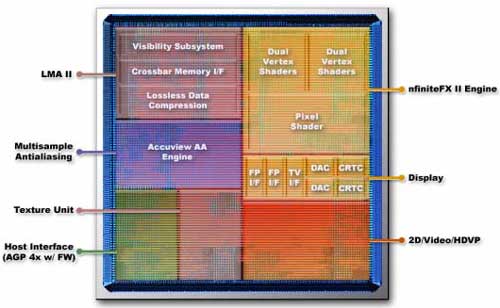Luminescent
Veteran
Everything else equal, Radeon 8500's seem to outscore Geforce 4's in vertex shader benchmarks (3DMark01, 3DMark03). The 8500's are averaging 6-7fps in 3DMark 03 while Geforce 4's average in the of 4-5 fps range. This is with vertex programs and not T&L, where triangle setup rate has little performance effect. With this in mind, is it a possibility that the 8500 has a more robust/efficient vertex program implementation?
In this thread:
http://www.beyond3d.com/forum/viewtopic.php?t=1952&highlight=r200+nv20+vertex
I brought up a similar topic. The processors are by no means cutting edge, but it is rare to have an older processor outperform a newer one. The attitude of many at the time of the Geforce 4's release was one of absolute superiority (albeit PS flexibility) against the competition. I beg to differ after encountering the above information.
In this thread:
http://www.beyond3d.com/forum/viewtopic.php?t=1952&highlight=r200+nv20+vertex
I brought up a similar topic. The processors are by no means cutting edge, but it is rare to have an older processor outperform a newer one. The attitude of many at the time of the Geforce 4's release was one of absolute superiority (albeit PS flexibility) against the competition. I beg to differ after encountering the above information.

